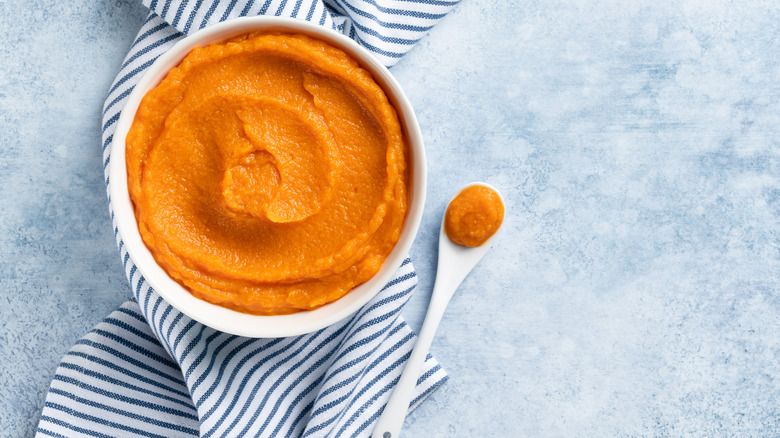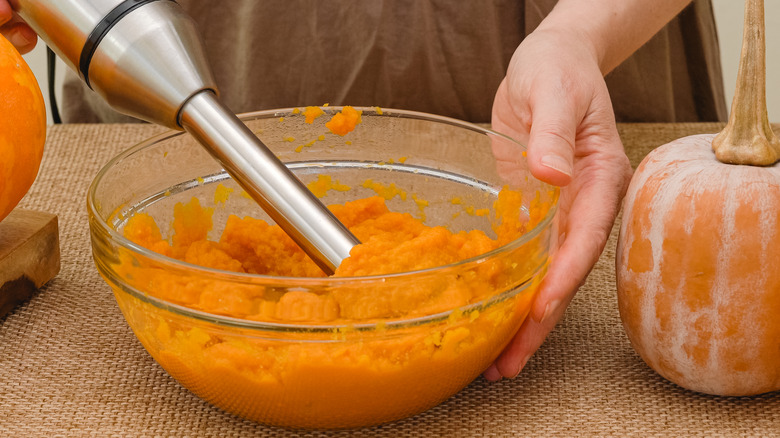How To Check If Your Homemade Pumpkin Puree Is The Right Consistency
Pumpkin season is but once a year. Pumpkin puree however, is useful all year long and shouldn't be limited to just holiday pies. Puree can be used in sauces, dips, baked goods, soups, and even in place of heavy cream in dishes like risotto, suggests MasterClass. And don't forget pumpkin butter!
Most grocers carry their own store brands of canned pumpkin puree, and then of course, there is the recognizable orange can by Libby's. Organic and heirloom varieties exist too. With options that extensive, you may wonder why anyone would make their own pumpkin puree at home. But, homemade pumpkin puree has its virtues. Homemade puree requires minimal effort, writes A Beautiful Plate. It's a great way to use what's in your garden or support your local farmer. If you live in a part of the country where pumpkin can't be found in cans all year, you'll definitely want to make it from scratch. And fresh pumpkin puree is often seen as better tasting and texturally superior to canned, writes Fifteen Spatulas.
Pumpkin puree should be smooth, creamy, and velvety. There is often a risk of any pureed food being watery and pumpkin is no exception, so we have a few tips to make sure your puree will be the perfect base for any fall dish.
Test it with a drinking glass
First and foremost you cannot use a jack-o-lantern pumpkin in your puree because it has watery and stringy flesh, per Myrecipes. Instead, Southern Living recommends using a sugar pumpkin because it is denser and has a sweet flavor. Long Island Cheese pumpkins are good too and Libby's uses a special variety called Dickinson, writes Cook's Illustrated, so if that's available to you it's another great option.
To prepare your puree, first clean your pumpkin and scoop out the seeds. Roast it flesh side down at 350 degrees Fahrenheit until easily pierced with a fork, writes MasterClass. After the flesh is cooled, scoop the flesh from the skin or peel it off and chop into large chunks. At this point, you can either blend the pumpkin in a food processor or mash by hand, writes Recipe Tips.
Consistency is key with homemade puree and you want it to be as smooth as possible. Some pumpkin purees may need water added. But, if you want thick and creamy puree, straining the puree once it's blended will thicken it, explains Food Doodles. Finally, to make absolutely sure your pumpkin puree is the right consistency, Cook's Illustrated suggests packing it into a drinking glass and then un-molding it onto a plate. If it slumps a little bit at the bottom, you're golden.

